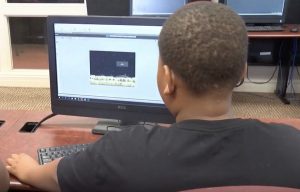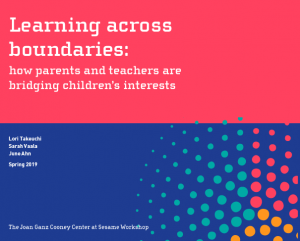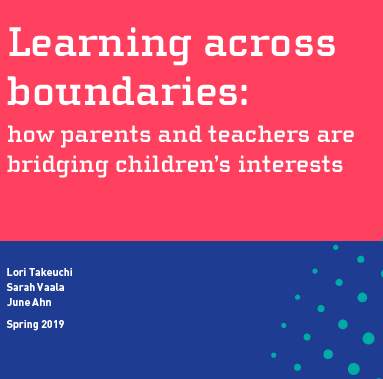This summer, my High Point University colleagues and I are hosting a video game camp with twenty 9- to 11-year-olds in our local Boys and Girls Club. Across a series of five sessions, the students are learning some basic video game design principles and coding. Alternating their roles each session—from visual designer, sound designer, and programmer—they are each creating their own simple video game. At the end of the camp they will be able bring their game home to play and show off to family and friends.

As we planned this camp, I was aware of many benefits the experience could have for the participating kids. Our goal was to send each student off with some basic coding skills, enhanced media literacy, and perhaps a greater perception of career options in media design and production with the bolstered self-efficacy to pursue them. But what I didn’t anticipate was how this experience would demonstrate the connected learning described in our newly released report, Learning Across Boundaries. In each session, I see the kids incorporate their outside interests within their games. Spiders, unicorns, ocean life, and YouTube memes—each student is crafting a very different game which draws on his or her own experiences and affinities from outside settings. On a broader level, learning to create video games is a rich opportunity to build on their existing interest in playing video games.

Learning Across Boundaries presents myriad findings (at 57 pages, we left no stone unturned) from national surveys of parents and teachers, respectively, regarding the places today’s children spend time, their activities in those places, and the informal learning beliefs among primary adult figures in their lives. Our mission was to dig into the practices through which parents and teachers knowingly or unknowingly engage children’s unique interests across settings, as well as their perceptions of children’s informal learning and adults’ role in facilitating it.
Admittedly, I had more to learn about this topic of study at the outset than my co-authors, Lori Takeuchi and June Ahn, both with an extensive background in Education and Learning Sciences. My original approach was shaped by my Communication background: we would find out what teaching practices were being overlooked by parents and teachers, then design instructive and persuasive messaging to encourage their uptake. As you will see from the report, such messaging would be largely unnecessary and misguided. Consider the following findings:
- 81% of parents report that their children teach them something at least once a week that the children learned elsewhere
- 74% of teachers say they are aware of the non-academic interests of the majority of their students; and 80% report talking with students about activities they do out-of-school.
- From team sports, to digital games, to arts and crafts—parents and teachers believe many different interests can foster children’s learning and development.
While the above figures are consistent across parents from different SES backgrounds and teachers in different types of schools (e.g., private vs. public; more vs. less English Language Learners), we did find a number of differences by family demographic. More children in upper-income families, for example, participate in various out-of-school activities, such as sports teams or art classes, compared to those in lower-income families. More upper-income parents also reported that they ask other children’s parents for recommended community organizations and activities for their children, perhaps contributing to greater “discovery” of available and affordable options.
My original plan of action for the report findings was misguided because we do not need to tell parents and teachers what they’re doing wrong; our findings suggest that we should tell parents and teachers about all the things they are doing right. Across demographics, child age groups, school-types, and neighborhood settings—these key figures in children’s lives recognize their interests, engage deeply with children around those interests, and pursue enrichment opportunities to expand children’s interests and learning. In fact, many may not even realize how the things they are already doing, like simply talking to children about their activities and letting their children teach them something new, encourage learning and development. (If I was building connected learning into a summer camp without even realizing, surely many parents are unaware of all the benefits of their styles of daily engagement!)
In addition, the findings highlight opportunities for other actors in children’s lives. For example, community organizations should seek to develop more out-of-school activities that are accessible and affordable and reflect children’s diverse interests, then make their existence known to families and teachers through multiple channels. Media producers should consider the many contexts of children’s daily lives—from the family car, to the neighborhood, to the laundromat—and design additional tools that can let them explore and expand their interests outside of home and school.
I invite you to dig into this report and interpret for yourself the many insights it contains about the patterns of children’s connected learning. We would love to hear of your impressions, as well as examples of ways you observe or participate in connected learning with the children in your lives.

